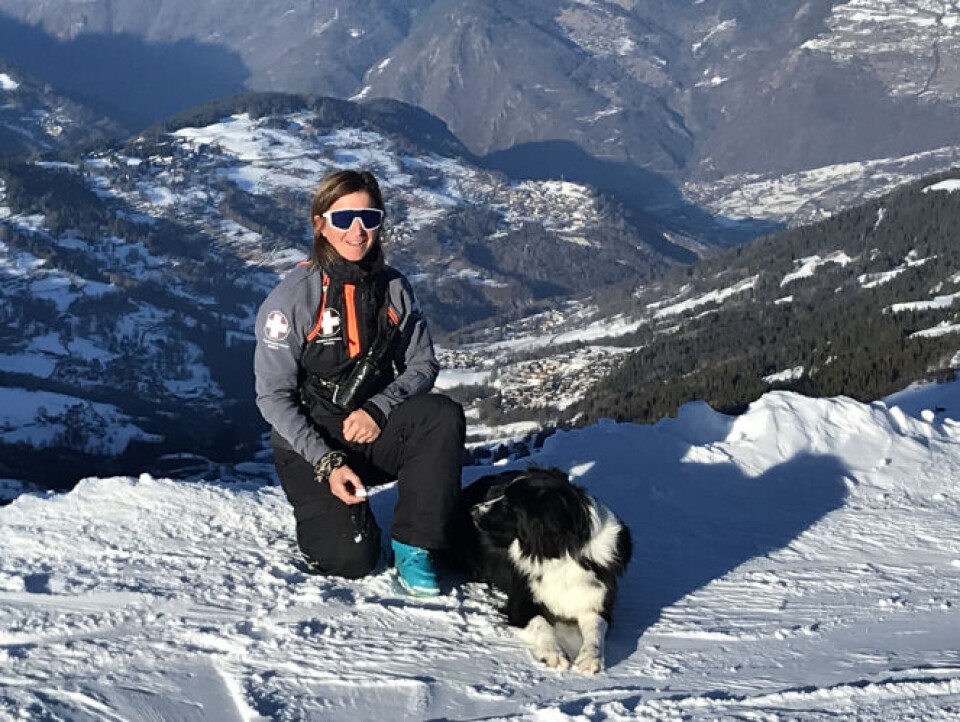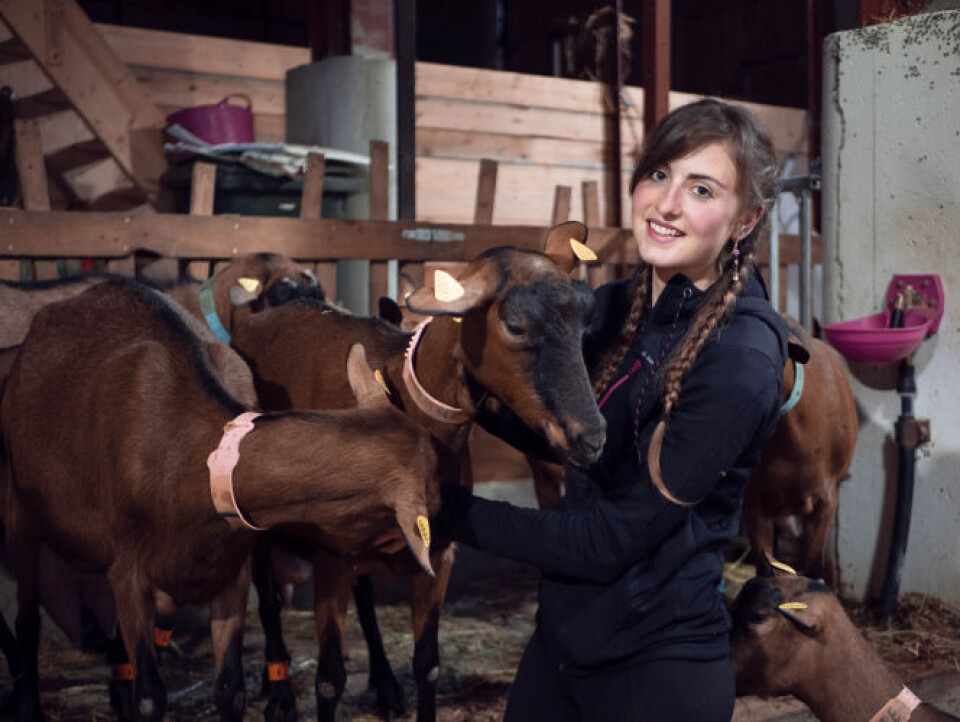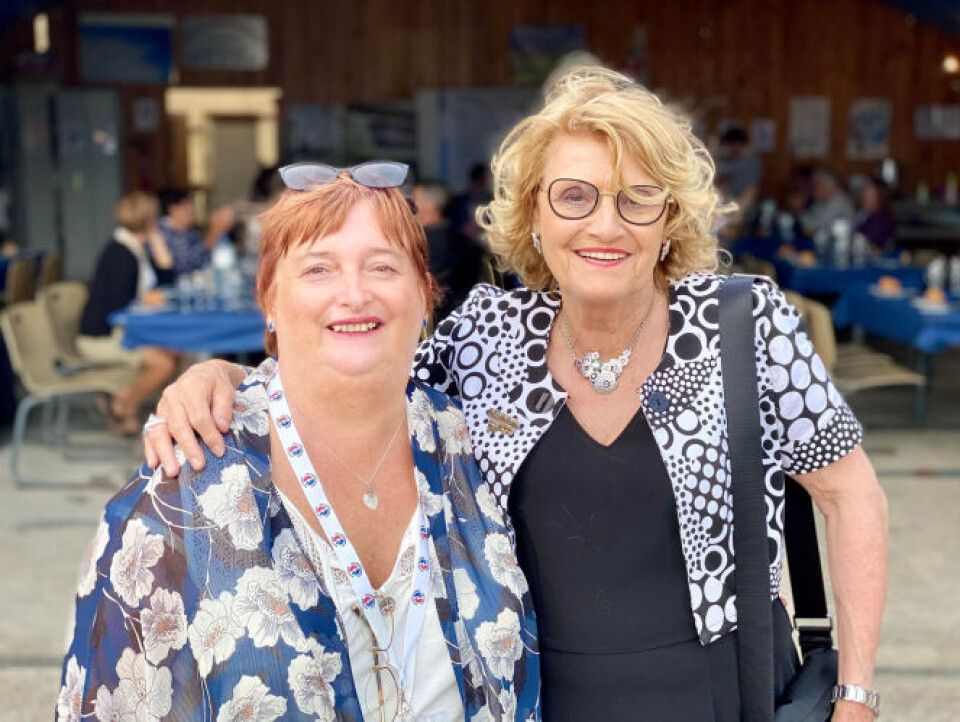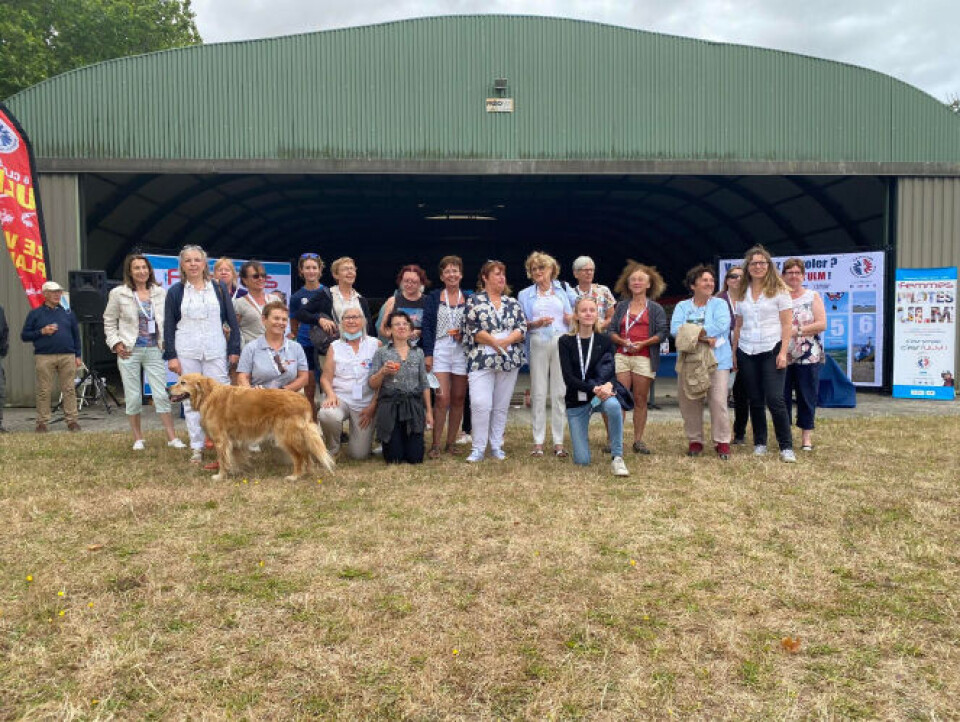-
From English teacher to TikTok star in France: 'The way to help students learn is to believe in them'
Toulouse-based Monsieur Prof's educational videos on learning English are a social media sensation
-
‘The first baby hedgehog we rescued was love-at-first-sight’
We speak to an expert about her hedgehog health centre and how to make your garden more hedgehog-friendly
-
Ballet lessons bring health benefits to over-55s in France
Online classes with the Silver Swans are transforming lives of older adults
International Women’s Day: Three French women who beat the odds
To mark the annual March 8 event, we speak to a pilot, a dairy farmer and a ski patroller about the challenges they faced to do something they love

‘Perseverance will always win the day’
Emilie Redon is a truck driver in the summer and, with her dog Paga, rescues people from avalanches in the winter.
“I have learned that women can do all kinds of things,” she says.
“Because I was not born in the mountains and did not learn to ski as a kid, I felt that becoming a pisteur secouriste (ski first-aider) was beyond me. I did not think I would ever achieve the skiing skills required. So I worked as an animateur (activity leader), until one day I met someone who explained the training and encouraged me to try... and I decided to do it.
“The important thing is to never give up. I worked really hard at my skiing, and failed the skiing test to enter the training course five times before succeeding the sixth time round but I got there in the end.”
As well as the ski test to get on the course, a second, even harder, one was required at the end to graduate, and Emilie managed that test too.
Originally from Normandy, she fell in love with the Alps when she visited on a skiing holiday and has worked there ever since, finally becoming a pisteur (ski patroller) seven years ago at the age of 37.
“I love being a pisteur. It is magic. My office is high in the mountains. We are the first up the slopes in the morning and we ski all of them every day to check there are no obstructions, and that barriers and signposts are still in place. We give people directions. We are on call every day in case someone hurts themselves. If it is minor, we help them down to the first aid post. If it is more serious, we can take them down to the station and get them to a doctor.
“In the most serious cases, we keep them safe until a helicopter can arrive with a doctor on board to take them to hospital.
“Every day is different. We ski down the slopes last of all to check they are empty. No one is left alone up in the mountains. Our job is ensuring the pistes are as safe as possible.”
Emilie has subsequently qualified as an artificier, who deliberately triggers controlled avalanches to keep the slopes safe, and two years ago she enrolled on a course to become a pisteur maître-chien.

She now works at Valmorel in Savoie. Paga, her two-year-old German Shepherd/Collie cross is her constant companion, and sometimes accompanies her on long trips in the lorry.
Only male dogs are used for avalanche rescue operations.
“If there are no females around, the dogs are less distracted. It is a bit sexist, but that is the way it is,” Emilie explains.
The main breeds used for the work are Border Collies, German Shepherd crosses, Belgian Shepherds and Golden Retrievers, and they are often specially bred.
Paga’s father was also an avalanche dog and Emilie hopes that Paga will be able to work until he is around 10 years old.
“It depends on his physical health and his enthusiasm for doing it,” she says. The initial training course for dogs is very intensive. Once the animal has graduated, its training continues all year round in the form of simple games, as well as more complex exercises, such as locating a person on a ski slope.
“Because of the pandemic, the last two ski seasons have been more or less cancelled, so we have never answered a real emergency call, but we train almost every day, all year round, and we are ready.”
Emilie admits that one half of her hopes she will never have to do a real-life rescue, saying she would not wish being caught in an avalanche on anyone.
On the other hand, she is eager to use her training at last: “I would love me and Paga to be able to save someone’s life. It would be fantastic.”
There are 32 pisteurs in Valmorel, only four of whom are women.
Out of the 60 specialist avalanche dog handlers in France, only around a dozen are women.
“But all jobs are for women as well as men,” says Emilie, “and perseverance will always win the day.”
‘You have to make your own decisions’
Laura Schmidhauser, 24, has overcome multiple rounds of surgery to fulfil her dream of becoming a dairy farmer.
Her parents raise pigs and produce their own charcuterie, and she grew up wanting to farm too. However, when she was 14, doctors discovered she had genetic hip dysplasia. As she started treatment, she was told farming would probably be too physically demanding.
“I could not imagine being anything except a farmer,” she says, “so I ignored them and did it anyway.
“It is a hard thing to do because you have to trust doctors, but you also need confidence in yourself and you have to make your own decisions.
“I always just thought we would find ways of adapting the machines, of setting things up so I could manage alone, of finding solutions rather than letting problems stop me.”

Laura is having another operation in May, but already knows it will not be the last, as the hip will need replacing sooner rather than later.
“It is just a case of waiting as long as possible,” she says.
Since leaving school, she has set up her own farm, the Chèvrerie des 7 Laux in the small mountain hamlet of Theys in Isère, south-east France. With a herd of 80 dairy goats, plus a menagerie of other pets, life is very physical.
“I work anything up to 120 hours a week, often starting in the middle of the night, because I generally milk at 4:00, before getting on with making cheeses.”
She learned her trade mostly through trial and error and makes 11 different goat’s milk cheeses, including Tomme de Savoie and a whipped fromage blanc, as well as yoghurt. “I sell direct from my own shop and in my parents’ charcuterie in the village, and various other local shops and bars stock my products too.”
As well as making cheese, Laura trains animals for her ‘travelling farm’. She takes a selection of her pets, including Lolita the pony, Wendy the sheep, four dogs, pigs, a miniature cow, a donkey, a horse, rabbits and chickens to nursing homes, retirement homes, nurseries and schools.
“Obviously, it is great fun, but it is also a good opportunity to teach people about farming and farm animals.”

Her goat farm is also open to the public, so people can visit to see the herd and watch the cheese-making process.
In 2016, she won ‘Miss France Agricole’, which she says was a huge morale boost after all her health problems and surgery.
Despite living with a certain level of constant pain, Laura maintains she is very happy.
“I am already living my dream. I am doing exactly what I always wanted to do. I just want to continue to make a living from my goats.”
‘I am not a militant feminist... I just want us to be able to do anything we want – including flying planes’
When it comes to gender equality in aviation, there is still a long way to go: worldwide, only around 5% of airline pilots are women.
Marie-France Jéhanne, the responsable du pôle féminin at the Fédération Française d’ULM (FFPLUM, French microlight federation) says younger women sometimes ask what the point of having a section for women is.
“I tell them nothing can be taken for granted in this life, especially not gender equality in employment.
“I am not a militant feminist – I just want women to be able to do anything they put their minds to in life, even things that used to be traditionally male-dominated, like flying.
“Women have always been present in aviation, but we are very far from achieving 50/50 parity. Things are so different with young men, there are fewer barriers for them.”
She points out that training to be a commercial pilot is long and expensive, despite available grants, and girls often do not even consider it as a possible career. “Things change very, very slowly. I have always lived in a man’s world: I worked in science and public building construction, so I have always been used to male universes which are closed to women.”

Her own route into flying was almost accidental.
“I always wanted to fly but it took me a long time to feel capable of it. I finally got my microlight pilot’s licence in 2012 when I was 52, but the following year I was hit by a van while walking in a supermarket car park, which put me out of action for several years.” Marie-France says aviation has been a constant thread in her life.
Her earliest memory is going to an aerodrome with her mother to sit in the planes, and she still remembers her first solo microlight lesson clearly.
“My instructor had prepared me very well, and talked to me over the radio while I took off. It was only when I realised I was alone in the air that there was a moment’s panic, but I then thought: No, organise yourself, you can land.
“Those moments stay with you for life. You do it, you succeed, and it is exhilarating. I love the discipline of doing the pre-flight checks, making decisions on whether to fly or not, and then going up, which gives you distance from daily life.
“You take off and you have left the land. You forget the stress and worry of daily life.”
Microlights are subject to slightly fewer rules and regulations than light aircraft, although safety is paramount. Microlight pilots cannot fly for money, cannot charge passengers more than a share of the costs, and cannot charge for carrying freight or making deliveries.
“There are a lot of volunteers in the microlighting world. The vast majority of instructors are volunteers. There are no jobs, you cannot earn money or win prizes. It is just a dream come true.”
As head of the FFPLUM women’s section, Marie-France organises an annual assembly of female microlight pilots. Despite the pandemic, around 30 pilots attended the last one in 2020, many of them flying themselves into the aerodrome for the weekend.

“It was the 17th assembly, and was a great success. We choose a different aerodrome every year, and my aim is to make it fun, as well as raising awareness that women can and do fly microlights. The weekend also provides opportunities for them to encourage each other and share contacts and experiences.
“As a representative of FFPLUM, I am also on the committee of the Association Française des Femmes Pilotes, which includes both microlight and plane pilots. I thoroughly enjoy giving out grants to female student pilots.”
The aviation industry might have taken a massive hit during the pandemic, but Marie-France is confident it will recover.
“Flying will never be finished because it is the ultimate dream – and has been since the beginning of time.
“People have always looked up and wanted to fly. You cannot stop them. We will fly with clean electrical motors, but we will continue to fly.
“The desire is impregnated in people. It is extraordinary, but there it is.”
Marie-France no longer flies.
“After my accident, it took three years for me to re-learn how to walk and my health is still bad.
“I fly as a passenger, but getting back into the pilot’s seat is not my priority right now, although I hope to in the future. I organise things for other women pilots instead.
“It is another way of flying.”
Related stories:
‘French do moderation, we Brits are restrained and then very wild!’
Anne de Bretagne: A symbol from birth of a ‘free’ Brittany
French microlight pilot realises her dream to fly solo across Africa
























